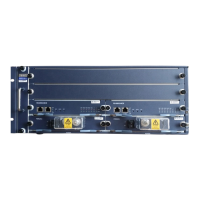





Do you have a question about the Zte ZXR10 8900 Series and is the answer not in the manual?
| Operating Temperature | 0°C to 45°C |
|---|---|
| Storage Temperature | -40°C to 70°C |
| Operating Humidity | 10% to 90% (non-condensing) |
| Storage Humidity | 5% to 95% (non-condensing) |
| Ports | 10/100/1000BASE-T |
| Layer Support | Layer 2 and Layer 3 |
| VLAN Support | 4K VLANs |
| QoS | 8 priority queues per port |
| Management | CLI, Web, SNMP, RMON |
| Power Supply | AC or DC |
| Redundancy | Power supply redundancy, fan redundancy |
Provides essential safety guidelines and instructions for operating the equipment safely.
Explains conventions used for highlighting important safety information and warnings.
Details various methods for configuring the switch, such as serial, Telnet, SSH, FTP/TFTP, and SNMP.
Describes different command modes within the CLI and how to access them.
Explains how to use the command line interface, including online help and abbreviations.
Covers the switch's file system, directories, and file operations.
Details how to configure the switch as an FTP/TFTP client for file backup and restore.
Provides procedures for backing up and restoring configuration files and software versions.
Guides through the process of upgrading the switch's software version.
Covers configuring system parameters like hostname, welcome message, and time settings.
Explains how to view system hardware, software versions, CPU, and diagnosis information.
Introduces the CLI privilege classification function and its 16 levels.
Details how to configure privilege levels for users and commands.
Provides a practical example of configuring CLI privilege classification.
Covers configuration of Ethernet ports, including enabling, auto-negotiation, duplex, and rate.
Details port mirroring setup for monitoring network traffic.
Covers ERSPAN (Encapsulated Remote Switched Port Analyzer) configuration.
Covers configuring port loop detection to prevent broadcast storms.
Covers IP addressing basics, classification, and configuration.
Details Address Resolution Protocol (ARP) configuration.
Explains DHCP's function in IP address allocation and its working procedure.
Introduces DHCP snooping for preventing bogus DHCP servers and IP/MAC binding.
Covers the configuration of DHCP server, relay, and snooping.
Provides examples for DHCP server, relay, and snooping configurations.
Covers commands for viewing DHCP status and troubleshooting.
Explains Virtual Router Redundancy Protocol (VRRP) for gateway redundancy.
Details the steps to configure VRRP, including group, IP, priority, and preemption.
Provides examples for basic and symmetric VRRP configurations.
Covers commands for viewing VRRP status and debugging.
Introduces Access Control Lists (ACLs) for packet filtering and traffic classification.
Explains ACLs processed by Network Processor (NP) mode.
Details the process of configuring ACLs, including rules, time ranges, and application.
Explains how to apply ACLs to physical ports in ingress or egress directions.
Covers applying ACLs to virtual ports like VLANs.
Details how to configure event linkage ACL rules for interface state changes.
Explains how to apply NP-based ACLs to physical ports, VLANs, and Smartgroups.
Provides examples for configuring ACLs with various rules and time ranges.
Covers commands for displaying ACL contents and interface configurations.
Introduces Quality of Service (QoS) and its importance for network performance.
Explains how to classify traffic based on packet fields using ACLs.
Details traffic monitoring using policers to limit bandwidth and specify actions.
Covers traffic shaping to control output packet rates and avoid congestion.
Explains queue scheduling modes (SP, WRR, DWRR) and default 802.1p.
Details policy routing for directing packets based on traffic classification.
Covers priority marking to reassign service parameters to traffic.
Explains traffic mirroring for analyzing and monitoring packets.
Covers traffic statistics for summing up packets and allocating resources.
Details configuring bandwidth thresholds for output queues.
Introduces Hierarchical QoS (HQoS) for complex network traffic scheduling.
Provides steps for configuring HQoS, including traffic classes and policies.
Provides examples for typical QoS configurations.
Illustrates a QoS configuration for VOD and Internet access.
Shows an example of configuring policy routing for ISP egress selection.
Covers commands for viewing QoS configurations and statistics.
Introduces 802.1x port-based network access control protocol.
Details configuration of DOT1x, including AAA, parameters, and local authentication.
Covers commands for viewing and clearing DOT1x authenticated users.
Provides examples for DOT1x Radius, Relay, and Local authentication applications.
Covers commands for troubleshooting DOT1x configurations.
Introduces cluster management concepts and switch roles.
Details enabling ZDP, ZTP, and setting up a cluster.
Provides an example for connecting devices for cluster management.
Covers commands for cluster maintenance and troubleshooting.
Covers Network Time Protocol (NTP) configuration for clock synchronization.
Covers Remote Authentication Dial In User Service (RADIUS) configuration.
Covers Simple Network Management Protocol (SNMP) configuration.
Covers Remote Monitoring (RMON) for network terminal services.
Covers SysLog configuration for managing and transmitting logs.
Covers Link Layer Discovery Protocol (LLDP) for neighbor discovery.
Introduces IPTV (Interactive Network TV) and its applications.
Covers global IPTV parameters, preview, CDR, channels, and service packages.
Provides examples for IPTV configuration scenarios.
Covers commands for IPTV troubleshooting and status checks.
Introduces VBAS (Virtual Broadband Access Server) protocol.
Details enabling VBAS globally, in VLANs, and configuring trust/port types.
Provides an example for starting VBAS function on switches.
Covers commands for VBAS debugging and information display.
Introduces CPU attack protection for network devices.
Explains the principle of protecting the switch CPU from protocol attacks.
Covers configuring protection for IPv4, IPv6, and Layer 2 protocols.
Provides examples for configuring OSPF and ICMP6 protection.
Introduces Unicast Reverse Path Forwarding (URPF) for preventing spoofing attacks.
Details the steps to configure URPF modes (strict, loose).
Provides an example of configuring strict URPF.
Covers commands for URPF interface statistics and traffic counts.
Introduces IPFIX for analyzing and performing statistics on network traffic flows.
Covers IPFIX basic configuration, sampling, templates, and TOPN.
Provides an example of IPFIX configuration.
Covers commands for IPFIX configuration and troubleshooting.
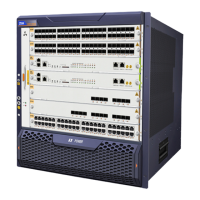



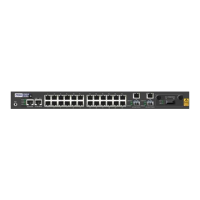
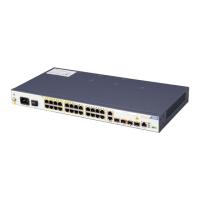

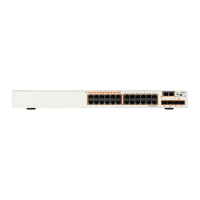
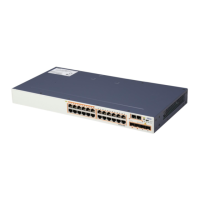
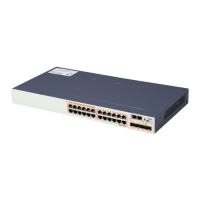
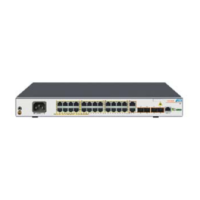
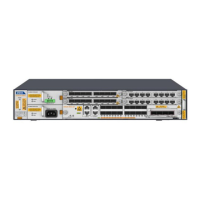
